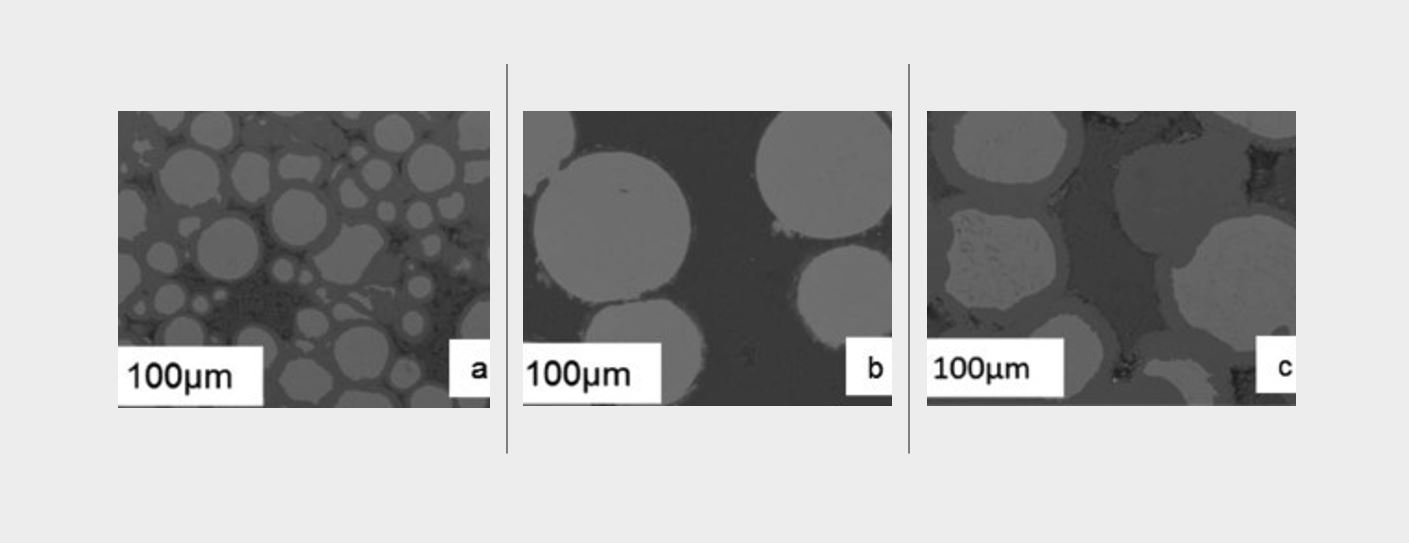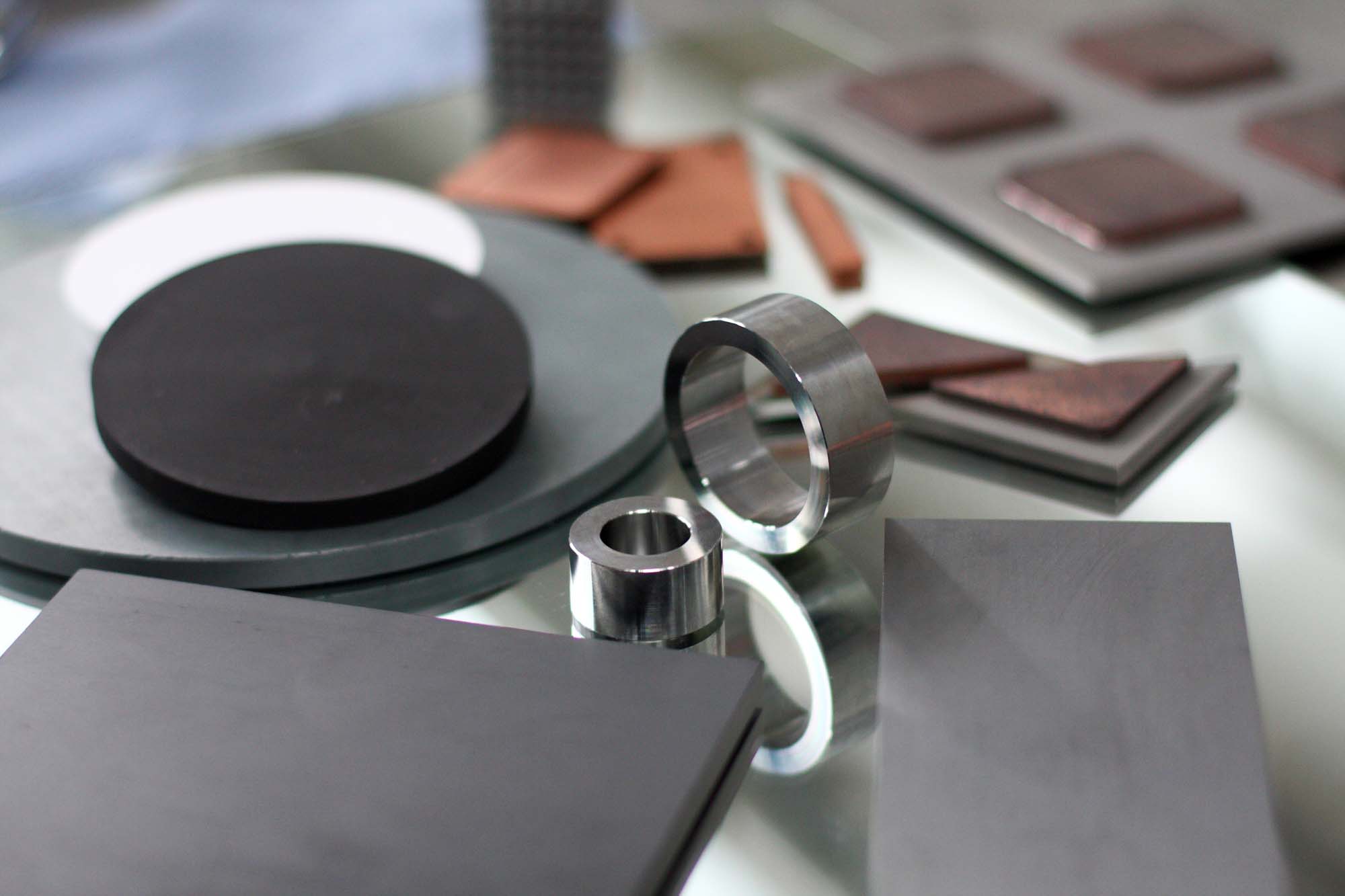RHP puts research efforts into further development of sputtering target materials together with partners as well as own developments.
One example ist the process of thermal diffusion coating used for applying thin metal coatings of e.g. Cr onto diamond particles. This technology is cheap, fast, and easy to apply. It also forms a strong interface between the diamond particle and the metal coating layer.
By selecting a proper Ti powder and using short hot pressing cycles denseness and finely distributed Ti-Al materials with a limited amount of intermetallic phases could be consolidated. The picture shows three different Ti-Al samples. Sample (a) is consolidated with a rapid hot pressing technique and with a finer Ti powder. Sample (b) is also consolidated with a rapid hot pressing technique, but with larger Ti particles. Sample (c) is, like (b), consolidated with larger Ti particles, but with a much longer hot pressing cycle (typical for conventional resistance heated hot pressing). The three samples indicate that both particle size and cycle time are essential parameters in the forming of a dense Ti-Al material with a limited amount of intermetallic phases.

For multi-phase sputtering targets, a strong focus is on fine-grained and homogeneously distributed components. The rapid hot pressing technologies allow for example to consolidate a dense Ti-Al target material with a very small amount of finely distributed intermetallic phases. Typically Ti-Al targets are used as starting material for hard TiAlN films.
A finely distributed microstructure could be achieved by using the powder metallurgical route. However, when Ti and Al powder is mixed and hot pressed with a conventional resistance heated hot pressing technique, thick intermetallic layers and pores can be found in the microstructure (see sample (c)). Our study proved that this disadvantage can be solved by using a rapid hot pressing technique such as SPS/FAST or direct hot pressing.






